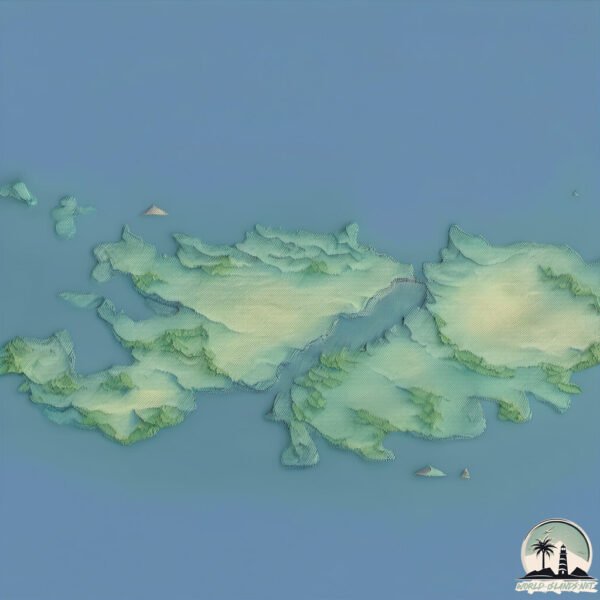Welcome to Rabbit , a Temperate island in the North Atlantic Ocean, part of the majestic Atlantic Ocean. This guide offers a comprehensive overview of what makes Rabbit unique – from its geography and climate to its population, infrastructure, and beyond. Dive into the details:
Geography and size of Rabbit
Size: 1.435 km²Coastline: 17.1 kmOcean: Atlantic OceanSea: North Atlantic OceanContinent: Europe
Rabbit is a Small Island spanning 1.4 km² with a coastline of 17.1 km.
Archipel: British Isles – A group of islands off the northwest coast of mainland Europe, including Great Britain, Ireland, and over 6,000 smaller islands, known for their rich history and cultural diversity.
Tectonic Plate: Eurasia – One of the world’s largest tectonic plates, the Eurasian Plate covers a significant portion of Europe and Asia. It’s characterized by diverse geological features, including the Ural Mountains, the European Plain, and the Himalayas formed from its collision with the Indian Plate.
The geographic heart of the island is pinpointed at these coordinates:
Climate and weather of Rabbit
Climate Zone: TemperateClimate Details: Temperate Oceanic ClimateTemperature: Warm Summer
Climate Characteristics: Known for its moderate year-round temperatures with ample rainfall and no dry season. Warm summers are characteristic.
Topography and nature of Rabbit
Timezone: UTC±00:00Timezone places: Europe/LondonMax. Elevation: 7 m Mean Elevation: 5 mVegetation: Open WoodlandTree Coverage: 75%
The mean elevation is 5 m. The highest elevation on the island reaches approximately 7 meters above sea level. The island is characterized by Plains: Flat, low-lying lands characterized by a maximum elevation of up to 200 meters. On islands, plains are typically coastal lowlands or central flat areas.
Dominating Vegetation: Open Woodland
Vegetation: 4 vegetation zones – Diverse Island
Infrastructure and Travelling to Rabbit
Does the island have a public airport? no .
Does the island have a major port? no .
The mean population of Rabbit is 30 per km². Rabbit is Gently Populated. The island belongs to Ireland .
Continuing your journey, Inishbofin is the next notable island, situated merely km away.
The Mystery of Rabbit Island
Imagine an island filled only with rabbits. Okunoshima is a small island in Japan's Inland Sea. It's called "Rabbit Island" because ...
The Mystery of Rabbit Island
Imagine an island filled only with rabbits. Okunoshima is a small ...
Imagine an island filled only with rabbits. Okunoshima is a small island in Japan's Inland Sea. It's called "Rabbit Island" because ...
A whopping 600 rabbits! Trip to Japan's Amazing Rabbit Island
Please experience a travel to Japan! I visited Rabbit Island, which is ...
Please experience a travel to Japan! I visited Rabbit Island, which is full of rabbits. A cute and friendly bunny. The hotel's ...
Rabbits On Okunoshima Island Swarm Tourist
Ireland is classified as Developed region: nonG7: Developed economies outside of the Group of Seven, characterized by high income and advanced economic structures. The level of income is High income: OECD.
News – Latest Updates and Headlines from Rabbit
Stay informed with the most recent news and important headlines from Rabbit. Here’s a roundup of the latest developments.
Loading...
Please note: The data used here has been primarily extracted from satellite readings. Deviations from exact values may occur, particularly regarding the height of elevations and population density. Land area and coastline measurements refer to average values at mean high tide.

